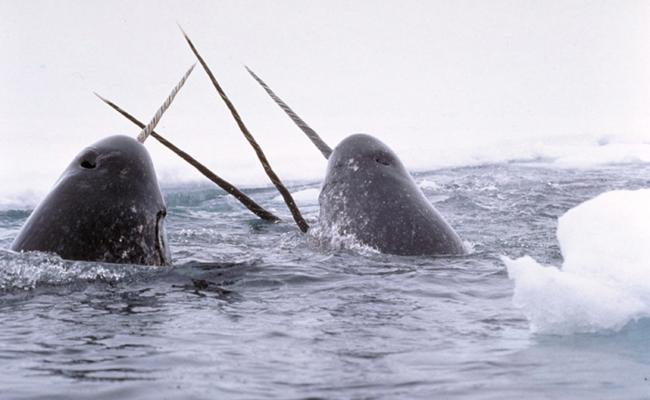State of the Climate Report 2023: The Fourth Warmest Year on Record for the Arctic

Sea ice in the Arctic continues to melt, with major implications for Arctic peoples and ecosystems. (Photo credit: Peter Prokosch/GRID Arendal)
Climate change continues to snowball in the Arctic region, including warmer air and sea temperatures, melting sea ice, thawing permafrost, and loss of ice sheets and glaciers. A new report sheds light on the state of the climate in 2023.
This month, the annual review of the world's climate revealed that the Arctic had its fourth warmest year on record last year.
The State of the Climate Report 2023 was led by scientists from NOAA's National Centers for Environmental Information and was published by the Bulletin of the American Meteorological Society.
The report is based on contributions from nearly 600 scientists in 60 countries. It contains comprehensive data on the Earth's climate, weather events, and other environmental factors.
The report contains a separate chapter on the Arctic, revealing decades-long trends observed across the Arctic, such as warming surface air and sea-surface temperatures, decreasing snow cover, diminishing sea ice, thawing permafrost, and continued mass loss from the Greenland Ice Sheet and Arctic glaciers.

The State of the Climate report is released each summer and is an international peer-reviewed annual summary of the global climate. This is the 34th issuance of the report.
A wetter, greener, and less frozen Arctic
The report shows the Arctic is moving toward a wetter, greener, and less frozen state. The average surface air temperatures for 2023 were the fourth highest since 1900.
The Arctic summer (July-September) was the warmest on record. Due to rapidly increasing summer temperatures, the Arctic tundra is greening at an alarming rate.
In 2023, circumpolar average peak tundra greenness was the third highest in the 24-year satellite record. Tundra greenness was particularly high in the North American tundra, but relatively low in the Eurasian Arctic.
Below ground, permafrost temperatures were the highest on record at over 9 of 17 reporting sites across the Arctic. According to the report, permafrost thaw disrupts Arctic communities and infrastructure and can also affect the rate of greenhouse gas release to the atmosphere, potentially accelerating global warming.
Sea ice
The seasonal Arctic minimum sea-ice extent, typically reached in September, was the fifth-smallest in the 45-year record. The amount of multiyear ice — ice that survives at least one summer melt season in the Arctic — continued to decline.
Since 2012, the Arctic has been nearly devoid of ice that is more than four years old.
The September 2023 sea-ice monthly extent, the lowest of the year, was about 10% lower than the past two years. Moreover, the 17 lowest September sea-ice monthly extents have all occurred in the last 17 years.
Early sea ice loss also leads to higher sea-surface temperatures. Despite considerable year-to-year variability, almost all the Arctic Ocean and marginal seas studied show a statistically significant 1982–2023 warming trend, reads the report.
As a result of melting sea ice, the Northern Sea Route has become more accessible. In 2023, the route saw 75 ship transits in the 2023 open season, the second-highest number of ships but the highest number of transported cargo.
The Northwest Passage saw 42 ship transits, including 13 cargo ships, a new record for the passage.
Wildfires
Another consequence of the exceptionally warm Arctic summer was Canada experiencing its worst national wildfire season on record.
The report says multiple communities in the Northwest Territories had to be evacuated during August, including more than 20,000 people from the capital city of Yellowknife. By the end of 2023, more than 6,000 fires had torched 15 million hectares of land, according to Natural Resources Canada.
New research published in the journal Nature found that the magnitude of the carbon emissions of 647 TgC (570–727 TgC) from these wildfires are comparable to the annual fossil fuel emissions of large nations, with only India, China, and the USA releasing more carbon per year.
Thus, the wildfire emissions become yet another example of devastating snowball effects following the warming of the Arctic region.





